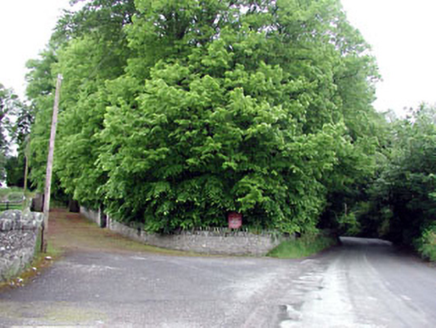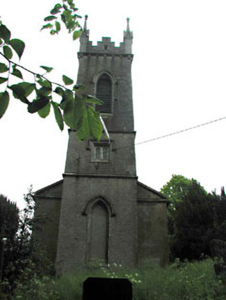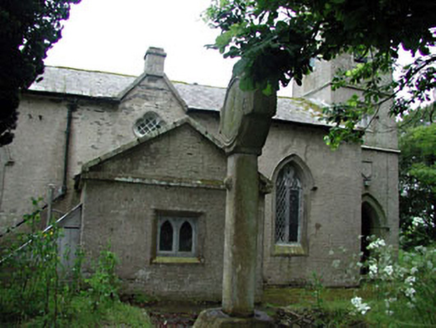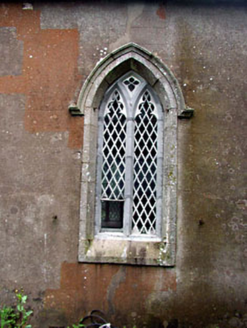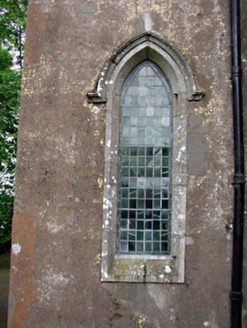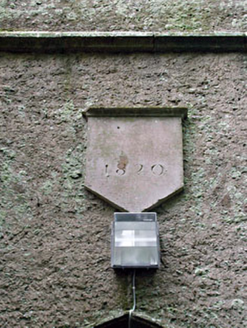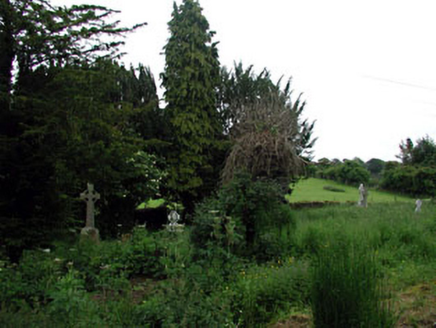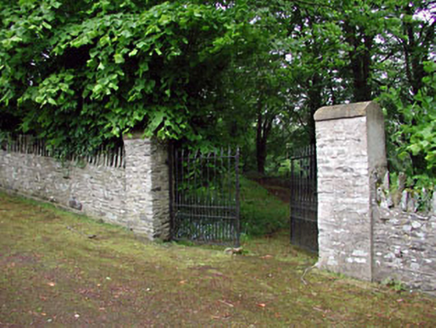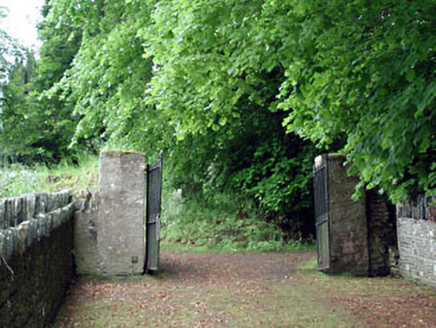Survey Data
Reg No
11820023
Rating
Regional
Categories of Special Interest
Architectural, Artistic, Historical, Social
Original Use
Church/chapel
In Use As
Church/chapel
Date
1815 - 1825
Coordinates
293327, 209870
Date Recorded
06/01/2003
Date Updated
--/--/--
Description
Detached four-bay double-height Board of First Fruits Church of Ireland church, dated 1820; consecrated 1822, on a rectangular plan originally three-bay double-height single-cell comprising three-bay double-height nave opening into single-bay double-height chancel (east); single-bay three-stage tower to entrance (west) front on a square plan. Extended, 1894, producing present composition. Pitched slate roof with lichen-covered ridge tiles, lichen-spotted cut-granite coping to gables, and cast-iron rainwater goods on cut-granite eaves retaining cast-iron octagonal or ogee hoppers and downpipes; pitched slate roof (east) with ridge tiles, roll-topped cut-granite "Cavetto" coping to gable, and cast-iron rainwater goods on cut-granite eaves. Rendered, ruled and lined battered walls; snecked granite walls (east) with cut-granite flush quoins to corners; rendered, ruled and lined surface finish (tower) with lichen-spotted cut-granite chamfered stringcourses including lichen-spotted cut-granite chamfered stringcourse (bell stage) on triple beaded consoles supporting diagonal obelisk-topped pinnacles framing crow stepped battlemented parapets. Pointed-arch window openings with Y-mullions, and cut-granite surrounds having chamfered reveals with hood mouldings framing fixed-pane fittings having cast-iron lattice glazing bars. Septfoil-detailed pointed-arch window opening (east) with cut-granite flush block-and-start surround having chamfered reveals framing fixed-pane fittings having leaded stained glass panels. Lancet window openings (tower), cut-granite surrounds having chamfered reveals with hood mouldings framing fixed-pane fittings having margined square glazing bars. Square-headed window openings (second stage), cut-granite surrounds having chamfered reveals with hood mouldings framing timber fittings. Pointed-arch openings (bell stage), cut-granite surrounds having chamfered reveals with hood mouldings framing louvered timber fittings. Interior including vestibule (west) with reclaimed cut-granite font [KD029-011010-]; pointed-arch door opening into nave with timber panelled double doors having overpanel; full-height interior open into roof with carpeted central aisle between trefoil-detailed timber pews, wall monuments (1886), exposed strutted King Post timber roof construction on beaded corbels with wind braced diagonal timber boarded ceiling in carved timber frame on carved timber cornice, Caen stone Gothic-style pulpit with Caen stone Gothic-style clerk's desk, and pointed-arch chancel arch framing encaustic tiled stepped dais to chancel (east) with mosaic tiled Gothic-style reredos below stained glass memorial "East Window" (1918). Set in landscaped grounds with piers to perimeter having rendered rounded capping supporting wrought iron double gates.
Appraisal
A church erected with financial support from the Board of First Fruits (fl. 1711-1833) representing an important component of the early nineteenth-century ecclesiastical heritage of County Kildare with the architectural value of the composition, 'a plain building [in a] churchyard of great extent [containing] the remains of the old church [SMR KD029-011002-] and numerous ancient tombstones' (Lewis 1837 I, 152), confirmed by such attributes as the standardised nave-with-entrance tower plan form; the "pointed" profile of the openings underpinning a "medieval" Gothic theme with those openings showing pretty cusped lattice glazing patterns; and the elongated pinnacles embellishing the tower as a picturesque eye-catcher in the landscape: meanwhile, aspects of the composition clearly illustrate the continued development or "improvement" of the church to designs by James Franklin Fuller (1835-1924) of Great Brunswick Street [Pearse Street], Dublin, with those works funded by the Honourable Charles Frederick Crichton (1841-1918) in memory of his parents John Crichton (1802-85) and Semila Griselda Crichton (née Beresford) (1804-84). Having been well maintained, the form and massing survive intact together with substantial quantities of the original fabric, both to the exterior and to the interior where contemporary joinery; wall monuments (1886) by Charles William Harrison (1834-1903) of Dublin; stained glass by James Powell and Sons (established 1834) of London; a gilded reredos by Alfred Peter Sharp (1839/40-1920) of Dublin; and the Crichton Memorial "East Window" (1918) by John Hardman and Company (closed 2008) of Birmingham, all highlight the considerable artistic potential of the composition: meanwhile, an exposed King post roof construction pinpoints the engineering or technical dexterity of a church making a pleasing visual statement in a sylvan setting.
